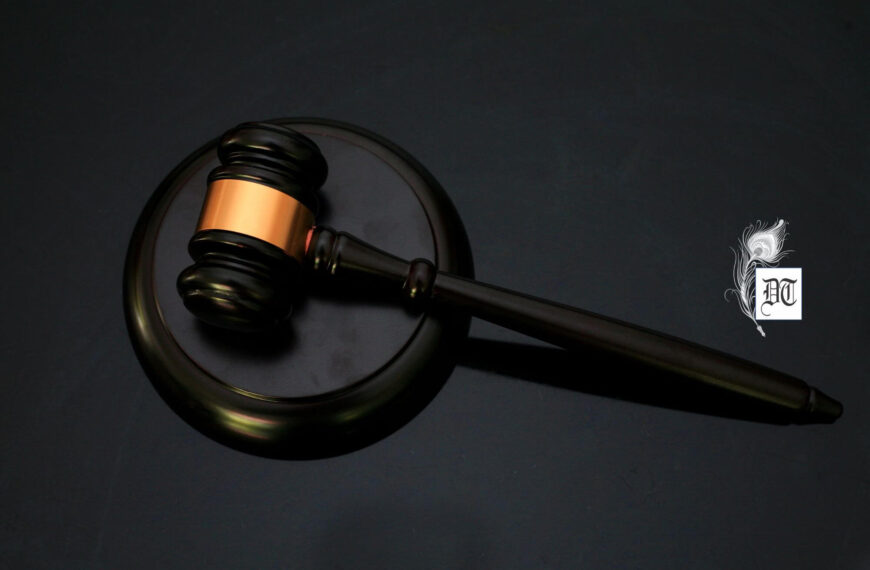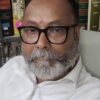Blood pressure is a silent killer. For the elderly, the risk factor is even higher. Which is why, senior citizens should take special care to maintain healthy blood pressure to ensure good cardiovascular health. In many seniors with high blood pressure, a single specific cause is not known. This is called essential or primary high blood pressure. Research is ongoing to find the causes of essential high blood pressure. In some people, high blood pressure is the result of another medical problem or medicine. When the cause of high blood pressure is known, this is called secondary high blood pressure. Rita gives us invaluable tips to control and contain hypertension, in the weekly column, exclusively for Different Truths.
Blood pressure is one of the most important yardsticks against which a person’s overall health is measured. High blood pressure or hypertension is a major risk factor for cardiovascular disease in both young and older persons, but for the elderly, the risk factor is even higher. Which is why senior citizens should take special care to maintain healthy blood pressure to ensure good cardiovascular health.
What Is Blood Pressure?
Blood is carried from the heart to all parts of our body in vessels called arteries. Blood pressure is the force of the blood pushing against the walls of the arteries. Each time the heart beats (about 60–70 times a minute at rest), it pumps out blood into the arteries. Our blood pressure is at its highest when the heart beats, pumping the blood. This is called systolic pressure. When the heart is at rest, between beats, our blood pressure falls. This is the diastolic pressure.
Blood pressure is always given as these two numbers, the systolic and diastolic pressures. Both are important. Usually they are written one above or before the other, such as 120/80 mmHg (measured in millimetres of mercury, a unit for measuring pressure). When the two measurements are written down, the systolic pressure is the first or top number, and the diastolic pressure is the second or bottom number (for example, 120/80).
Blood pressure changes during the day. It is lowest as we sleep and rises when we get up. It also can rise when we are excited, nervous, or active. Still, for most of our waking hours, our blood pressure stays pretty much the same when we are sitting or standing still. That level should be lower than 120/80 mmHg. When the level stays high, 140/90 mmHg or higher, one is said to have high blood pressure. With high blood pressure, the heart is forced to beat harder, overworking the arteries and increasing our chances of a stroke, heart attack, and kidney problems. Older persons with high blood pressure are at a significantly greater risk for heart failure, stroke, chronic kidney disease and damage to the arteries, which can cause a heart attack.
Complications of High Blood Pressure
If high blood pressure is not diagnosed and treated, it can cause:
- The heart to get larger, which may lead to heart failure.
- Small bulges (aneurysms) to form in blood vessels. Common locations are the main artery from the heart (aorta); arteries in the brain, legs, and intestines; and the artery leading to the spleen.
- Blood vessels in the kidney to narrow, which may cause kidney failure.
- Arteries throughout the body to “harden” faster, especially those in the heart, brain, kidneys, and legs. This can cause a heart attack, stroke, kidney failure, or amputation of part of the leg.
- Blood vessels in the eyes to burst or bleed, which may cause vision changes and can result in blindness.
What is Normal Blood Pressure for Elders?
For the elderly, as with the rest of the population, a blood pressure reading below 120/80 mmHg is considered normal. However, very low blood pressure can sometimes be a cause for concern and should be checked out by a doctor. Doctors classify blood pressures under 140/90 mmHg as either normal or prehypertension. Normal blood pressure is lower than 120/80 mmHg.
Prehypertension is blood pressure between 120 and 139 for the top number, or between 80 and 89 for the bottom number. If an elderly person’s blood pressure is in the prehypertension range, it is more likely that they will end up with high blood pressure unless medical action is taken to prevent it.
What is High Blood Pressure?
A blood pressure of 140/90 mmHg or higher for an elderly person is considered high blood pressure. If one or both numbers are usually high, an elderly person will be diagnosed as having high blood pressure.
What Causes High Blood Pressure?
In many seniors with high blood pressure, a single specific cause is not known. This is called essential or primary high blood pressure. Research is ongoing to find the causes of essential high blood pressure. In some people, high blood pressure is the result of another medical problem or medicine. When the cause of high blood pressure is known, this is called secondary high blood pressure.
Signs of Elevated Blood Pressure
High blood pressure is called the silent killer because one can have it for years without knowing it. The only way to find out if one has high blood pressure is to have the blood pressure measured using a blood pressure cuff and stethoscope or electronic sensor. At Arogya HomeCare (www.arogyahomecare.in), our trained care managers check and record our elderly careseekers’ blood pressure several times on different days, so the doctors can diagnose whether he/she has high blood pressure or if they require a change of blood pressure medication.
Who are at Risk for Hypertension?
With one in every three Indians suffering from hypertension, cardiovascular diseases are acquiring epidemic proportions in India, warn doctors. Risk factors for high blood pressure to watch out for include:
- Being overweight
- A family history of high blood pressure
- Prehypertension (that is, blood pressure in the 120–139/80–89 mmHg range)
- Men over age 45
- Women over 55
Other things that can raise blood pressure include:
- Consuming too much salt
- Drinking too much alcohol
- Not getting enough potassium in the diet
- Not getting enough physical activity
- Taking certain medicines
- Having long-lasting stress
- Smoking (smoking can cause a temporary rise in blood pressure)
Maintaining a Healthy Blood Pressure
Exercise and lifestyle changes: Learning how to maintain a healthy blood pressure is surprisingly simple. The first step to lowering blood pressure is incorporating some changes in one’s lifestyle. In addition to regular exercise and weight control, maintaining a low-salt diet is quite important. For seniors, exercise can involve simple changes to everyday routine, like walking more often and engaging in household chores. In addition to improving overall cardiovascular health and cholesterol, the presence of which can increase blood pressure by narrowing arteries, exercise can also help with weight loss.
Healthy diet: Maintaining a healthy diet is another essential tool for lowering blood pressure. Not only is healthy nutrition important for positive cardiovascular health and additional energy, a low salt diet is particularly important for lowering blood pressure, as salt indirectly increases the volume of blood (by adding water to the bloodstream), which in turn increases blood pressure.
One of the most common diets recommended for those individuals who struggle with hypertension is called the DASH diet, which stands for Dietary Approaches to Stop Hypertension. The DASH diet is a lifelong approach to healthy eating that’s designed to help treat or prevent high blood pressure (hypertension). The DASH diet encourages reduction of sodium in the diet and eating a variety of foods rich in nutrients that help lower blood pressure, such as potassium, calcium and magnesium.
By following the DASH diet, one may be able to reduce blood pressure by a few points in just two weeks. Over time, the systolic blood pressure could drop by eight to 14 points, which can make a significant difference in an elderly person’s health risks.
Medication: But as many people know, diet and lifestyle change can often be very difficult. Medication is also an option for many people, sometimes because an individual has a difficult time achieving significant lifestyle change, and sometimes because hypertension is severe enough to mandate a combination of lifestyle change with medication. For many, treating their high blood pressure with medication can be a difficult subject, one that should always be considered under the guidance of a doctor. Blood pressure medication can be categorized into three main groups:
- Thiazide Diuretics
Often the first course of action in terms of drug treatment, these medications focus on the kidneys by helping the body eliminate sodium, or salt, and water.
- Beta Blockers
These medications cause the heart to beat slower and with less force, working to reduce blood pressure by focusing on the centre of the circulatory system itself. Often beta blockers will be prescribed along with thiazide diuretics (combining drugs is a common practice that can lower blood pressure).
- Angiotensin-converting Enzyme (ACE) Inhibitors
Commonly prescribed along with thiazide diuretics, ACE inhibitors counteract a natural chemical that narrows blood vessels, which in turn eases pressure on vessels.
- Other types of drugs
can be effective against hypertension as well. Finding the right combination varies with each person.
To effectively treat hypertension, the best strategy is to recognise one’s individual risks, which might include genetic history, obesity or simple physical inactivity and act accordingly. For the elderly, moderately high blood pressure might be less serious than it is in a middle-aged person. But even when blood pressure rises minimally past age 50, it’s still important to take the proper steps to ensure healthy senior years. A normal blood pressure is an important first step toward achieving long-term health.
Sources:
https://www.agingcare.com
http://www.aplaceformom.com
http://www.healthinaging.org
©Rita Bhattacharjee
Photos from the internet.









 By
By
 By
By
 By
By
 By
By